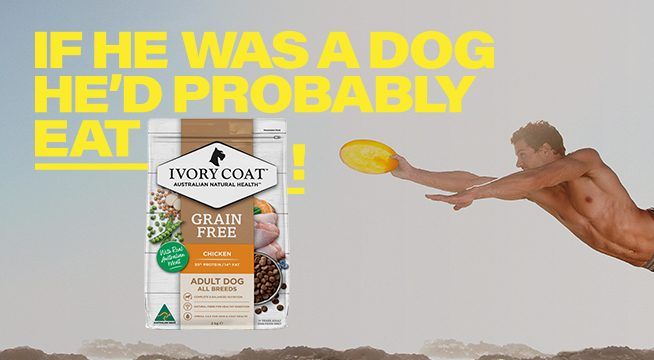Confused Concepts
The original LinkedIn was all about connections.
To build your professional network, you connected with others, in a similar way that you made friends or ‘friended’ on Facebook.
Once you were connected, you could endorse each other, send messages and maybe even help one another make that next career move.
Fast forward 10+ years. LinkedIn was bigger. Much bigger.
There’s only so many business cards you can absorb and endorsements you can receive from your buddies.s Finding jobs is still a big value prop too, but you’re not looking for a job every day.
The product had grown but also needed new, persuasive reasons for people to continue using Linkedin.
The need for a new concept
Enter the newsfeed. The newsfeed was a feed of content that mainly included updates and posts from your connections.
The problem was, sometimes you wanted to see content in your feed from people you didn’t know in real life. Users were unlikely to accept requests from people they didn’t know and were burnt from salespeople who bought their way into the inbox.
Therefore, the content in your feed was greatly constrained by who you were or weren’t connected to.
The concept of connecting was serving the purpose of friending and following. Connecting is two-sided and based on trust, following is one-sided. There needed to be a change.
So LinkedIn introduced a new concept, called follow. Follow allows you to see someones posts and articles without being connected.
Following vs Connecting
Following solves a user problem, but it’s not without some complications.
Firstly, there’s privacy. With Connect, it makes sense that only people you’re connected to can see your posts. But with following, which is one sided, it opens the question of who can see your posts. Are all posts default public? It’s now trickier for users to make both public posts and posts only for connections. There’s now a need for post-by-post visibility settings.
Also, since connect originally served the same purpose as follow, how do you untangle them? Linkedin solves this by allowing you to ‘unfollow’ a connection (you are following them by default).
It’s also a little confusing to have two similar actions on the platform ‘follow and connect’. What should be the primary action? And why should I follow someone rather than connect? There’s a lot of thinking to do especially around who gets recommended and tied to what action. For example, LinkedIn would never suggest you connect with Bill Gates. Conversely, they might choose to promote follow for an influencer who is gaining traction with their articles, to help them grow their audience.
There’s also the work to communicate the benefits of following:
- If you’re looking to gain even more professional insights, updates, and advice from the knowledgeable people you don’t know on LinkedIn.
- See and interact with people you want to learn from
- Following people can help you get started by gleaning job hunting tips
It’s an interesting case study of a product growing, user needs changing and business priorities shifting.
Even if they seem small and insignificant, concepts like connect and follow are how users understand and use your product, and how they ultimately get to the value they are looking for.
It’s much easier to sell, explain and encourage usage of a new feature of function if it cleanly serves one purpose. Connect (still) serves many purposes and still causes confusion to this day.
The Restaurant
You are working at a large, busy restaurant. It’s half full right now. Lunch is finishing up. There’s cooks, servers, cleaners, and patrons enjoying meals and drinks. There’s old furniture and appliances throughout the restaurant.
Yesterday, the restaurant decided to build a dancefloor. Management noticed patrons were staying back after dinner to drink until late, since there was no other suitable venue in town for them to go.
You are tasked with figuring out this dancefloor thing. Who’s going to use it and how they will use it. You can use the existing space, appliances and furniture. It’s very hard to remove anything from the restaurant. It’s also tricky to build anything specific or new. We don’t know if this dancefloor will be successful, but we need to try out something.
You don’t need to build a nightclub. Come back with some ideas. Present some smart options. Show us what it might look like. Maybe it’s not even possible.
This is sort of what the role and responsibilities of a UX designer is looking like these days.
Take a design role at a medium-large software company for example.
- You are collaborating with a bunch of different folks. There’s no siloed design team.
- There’s less and less value in novel user interface solutions or minor interface polishing tasks. It’s unlikely you are starting anything from scratch.
- Someone has likely thought through or worked on a similar problem before you.
- What we decide to work on (viability) becomes increasingly more important question to ask than what the solution looks like.
- You are working in a complex, dynamic space.
Sound familiar? The next question to ask is, how can I do a good job in this environment?
- Deeply understanding the business. Design has a lot to learn from users, but also a lot to learn about how the business works. Take a note from ‘team business’ aka product management and get involved where you can in the ‘why’ as much as the ‘how’.
- Product thinking.
- Storytelling. Although this comes ‘after the design’, you still need to communicate and sell.
- Managing complexity. This is where design thinking fits in. I believe in design thinking, I abhor design theater. When 1000 tonnes of complexity gets dropped on your head (with a deadline), you need smart, thoughtful processes to find thread an elegant solution.
- Yes, you will still be ‘designing stuff’, but it might feel more like a rearranging placemats at a restaurant than designing widgets on a screen.
19 seconds of WWDC 2022
Apple is famous for their presentations. Steve took the art form to new levels in the 00’s. Today, it’s even more finely tuned, despite lacking some of that original creativity and magic.
I’m going to look a bit closer at one particular clip from the recent WWDC 2022, 19 seconds to be exact, that introduces a new way to access spotlight search on iOS.
Here’s the clip. What caught my eye were the smooth, subtle and frequent transitions. There’s nothing flashy, and it’s all certainly achievable in Keynote. But what’s impressive is how much they communicate in such a small amount of time.
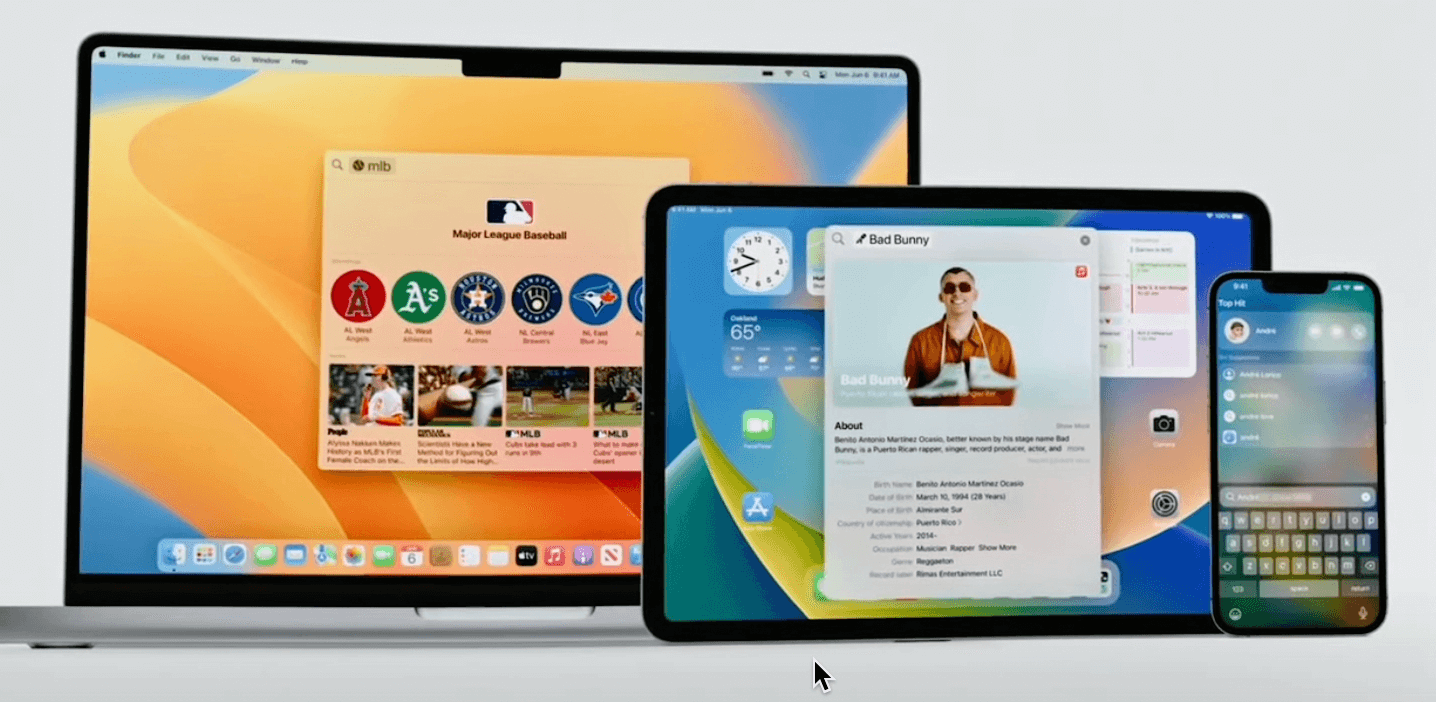 “Rich results and the ability to take actions right from spotlight are also coming to iOS and iPad OS”
“Rich results and the ability to take actions right from spotlight are also coming to iOS and iPad OS”
Craig is setting up to talk about searching for stuff on iOS. We are zoomed out and we are looking at how spotlight spans across all platforms.
 “Speaking of iOS we wanted to make spotlight even easier to discover and access.”
“Speaking of iOS we wanted to make spotlight even easier to discover and access.”
Now we are focused on the iPhone/iOS. Specifically, we are looking at a Home Screen, where the new feature is located. Craig is implying the customer problem. You don’t always need to say ‘customers were failing to find this feature’ or ‘feature x usage has really plummeted’. Apple would rather say ‘we wanted to make X better’.
 “So we added it right to the bottom of the Home Screen.”
“So we added it right to the bottom of the Home Screen.”
Boom. This is the solution. We don’t know exactly how it works yet, but this is the primary design update. We are also zoomed into the area of interest (lower third).
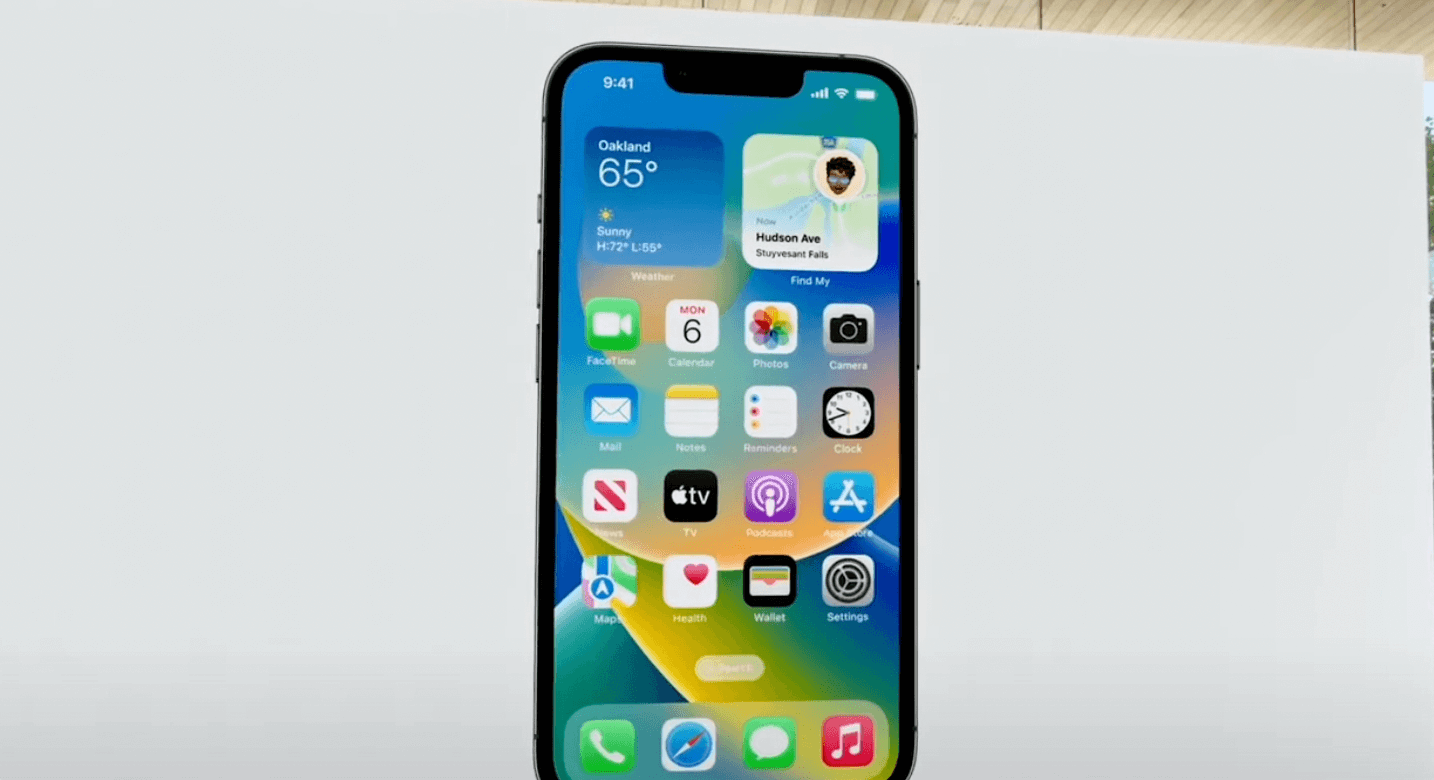
We zoom back out to show how this feature fits into the entire Home Screen. Spotlight search seems to replace the page dots on the home screen.
What is not shown, is when you swipe onto other app pages. The page dots appear briefly before switching back to the search button. Craig doesn’t have time to go into that level of detail, and shouldn’t need to.
 “With just a tap, you can use Spotlight to launch an app…”
“With just a tap, you can use Spotlight to launch an app…”
 “Find a contact, or start a search…”
“Find a contact, or start a search…”
One of the best ways to explain something is show it in action. Common use cases can help bring your audience along. In this example, he’s showing a contact lookup but could easily have been finding an app, searching for an artist etc.
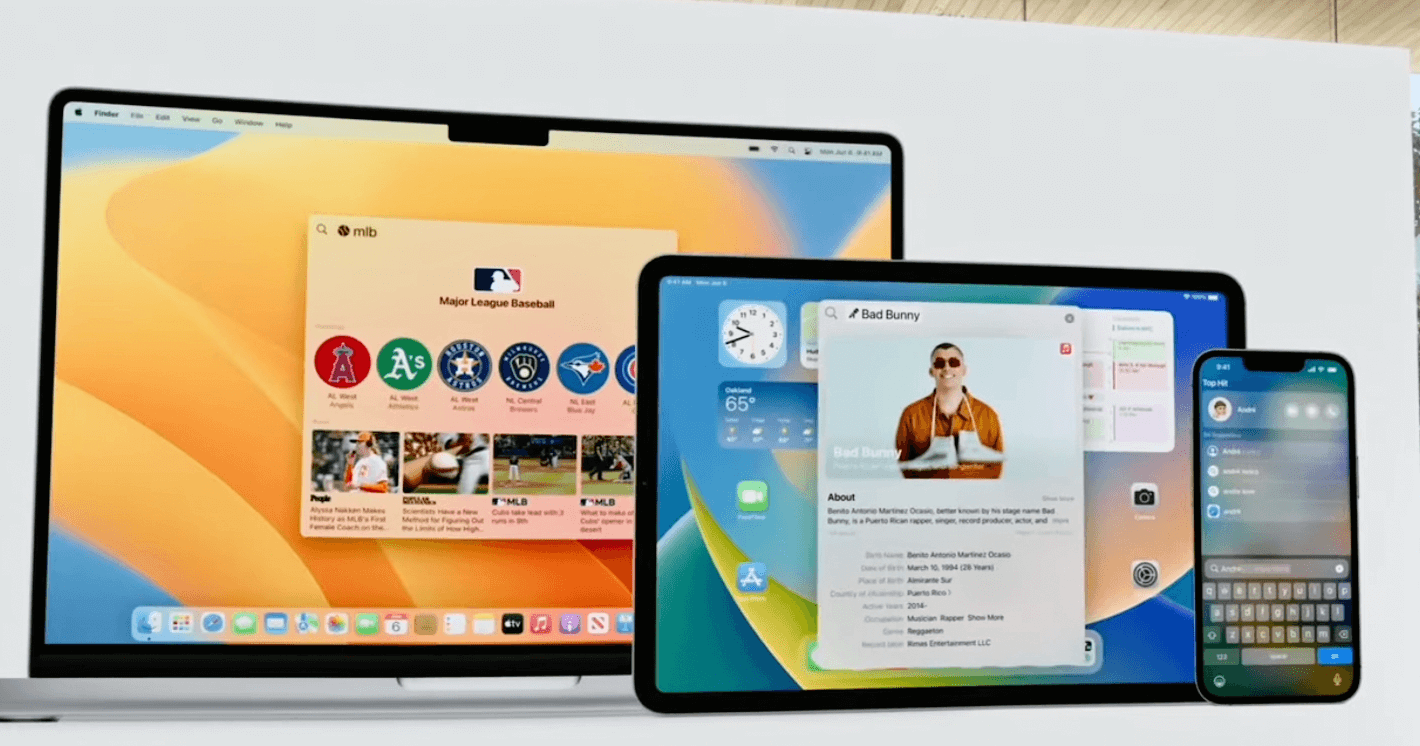 “These updates make spotlight more productive, helping you find what you’re looking for faster.”
“These updates make spotlight more productive, helping you find what you’re looking for faster.”
The last sentence and slide close the loop in a number of ways. He reiterates they have solved the user problem and made Spotlight better. Visually, we have returned back to original composition. The last frame on the iPhone remains the contact view. We dove into the water and now we are back on the surface. Now only 6461 seconds more to present..
Bonus: A great twitter thread by an ex-Apple designer on his approach to building a presentation.
The Wetsuit
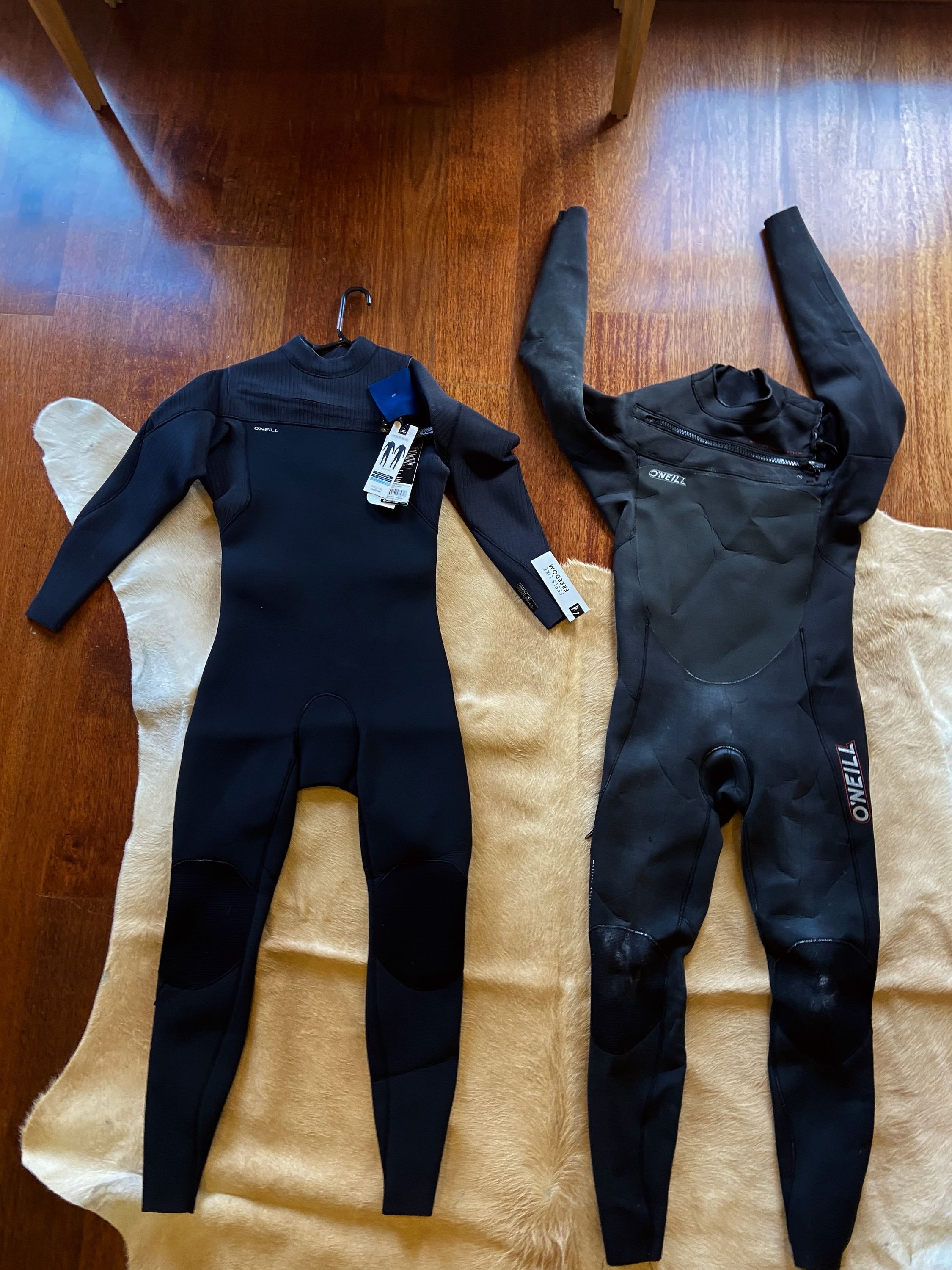
When I bought you, in early 2018, I thought very long and hard about this financial decision. I was back in Australia and preparing to move from my home in New York to San Francisco, where it might be actually possible to see a beach after work. It felt like a really big purchase. Maybe the most expensive thing I would own? I treasured it before I even used it.
But at first, it didn’t get much use. It was hard to get in the water. I might get invited to go surfing with a friend, but I wasn’t bringing much to the table. I had no surfboard, no car. But I had a wetsuit. I would borrow a surfboard, or rent something from the surf shack at Bolinas, north of San Francisco. Surfs were few and far between, and rather than that buzz beginners usually get, I always felt a bit disappointed. I was so bad at it, and there was something always ‘wrong’ with the conditions. “The surf was better last week.”
The next year, in 2019, I started taking things more seriously. I invested in a foam board from Walmart. I focus on Pacifica, a beach break about 20 minutes down highway 1. It’s close enough to home, popular with city slickers. Couldn’t hold much swell without dumping onto the sand bank but could get a nice clean ride if you knew where to go. Crowded on a hot Saturday, but empty at dawn on a Tuesday morning.
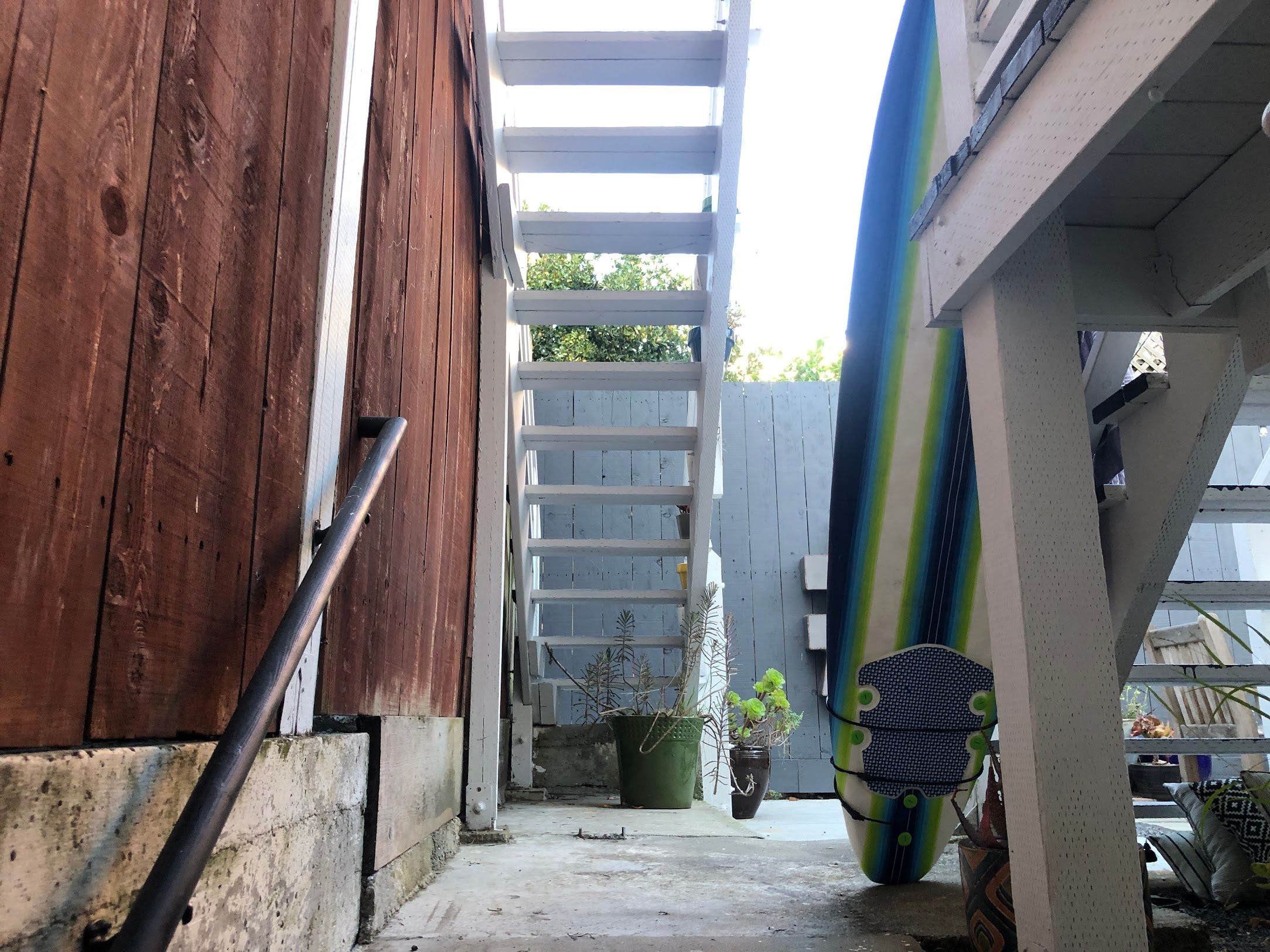
- I’ve got my 8ft foam board from Walmart. It’s embarrassing, but it’s cheap and convenient and you it actually catches every wave. I’m booking cars on Getaround or Zipcar. I’m planning backwards from when I need to be at work, at 9am. I need to wake up, walk to the car, drive it back to my house, load my wetsuit, board, towels, change of clothes, drive to the beach, suit up, stretch and trudge across the cold sand, surf, see the sun come up, load up the car, drive home, trying to warm up in the car and miss some of the incoming rush hour traffic, unload my stuff at home, drive the car back to it’s parking spot, jog back home, wash my wetsuit and board, hang everything up, shower, get dressed and jump on my bike to ride into work.

Sometimes I would park the car and walk home with my surfboard, juggling a backpack and dripping wetsuit, often walking past homeless guys who would nod and excitedly yell out, the surfboard adding a bit of exotic flair to the city street.
By the end of 2019, I was sharing a house with a ‘real surfer’. He would check forecasts. He had a thicker wetsuit, and boots, and a hood. He would sometimes surf before and after work, even though he had an hour long commute. He had multiple surfboards, all short and aggressive looking. My surfboard starting to sag and crease, and had pink fins.
I surfed with him a few times, and had a handful of friends who liked to surf, but often I was by myself. I started to surf Ocean Beach occasionaly. It was usually out of bounds for me. Too big. Too stormy. Too cold. Too windy. Too rippy. Too many sharks. I read about the doc and gained new respect and admiration for the ocean around me. “native San Franciscans will tell you that there is no surfing in San Francisco. There is surf, of course, but the ocean, they say, is too cold and stormy for surfing.” But sometimes it was perfect there, at least for me. Small, fluffy and clean. The sky would be pink in the morning above the sand dunes and one time I dragged a friend and showed her - look, it’s not that bad right?
End of 2019. I gave my wetsuit a rest for trips to Sayulita, Mexico and Costa Rica. The water is warm. The sun dancing off the water looks like a bowl of fruit loops. You catch more waves in 5 days than you did in the last few years. Surfing doesn’t always need to be cold and dark and hard, but I feel like I will always associate surfing with a wetsuit.
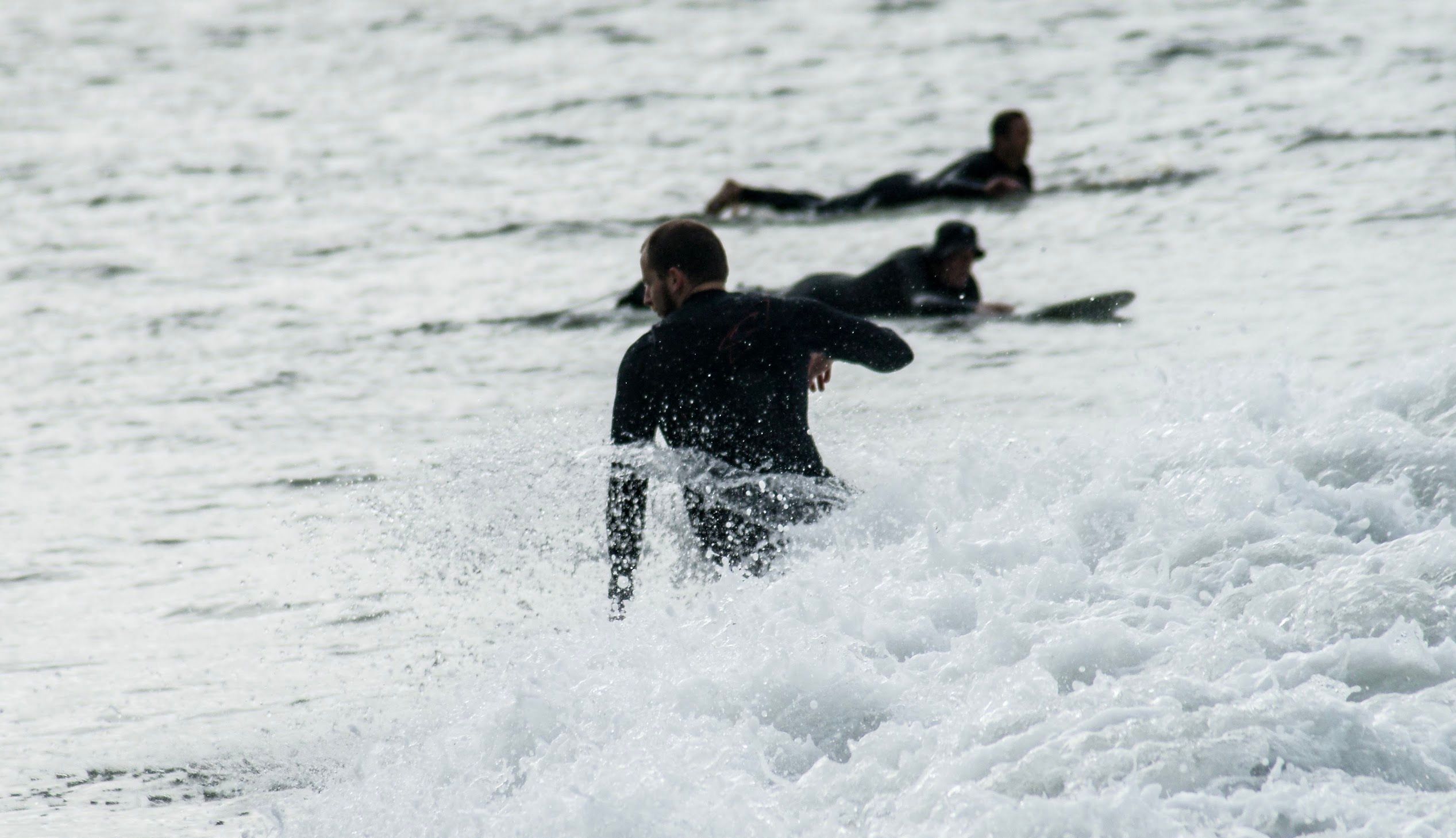
- The foamie is gone, and so is San Francisco. You’re back in southern Australia, and the water is cold, and all you can do is surf. Actually, you may not be allowed to surf. Well, if there’s a beach within 15km radius of your house, and you better not spend longer than an hour, because this is just your portion of exercise for the day. And I heard police were checking license plates and you’re really not a local here are you?
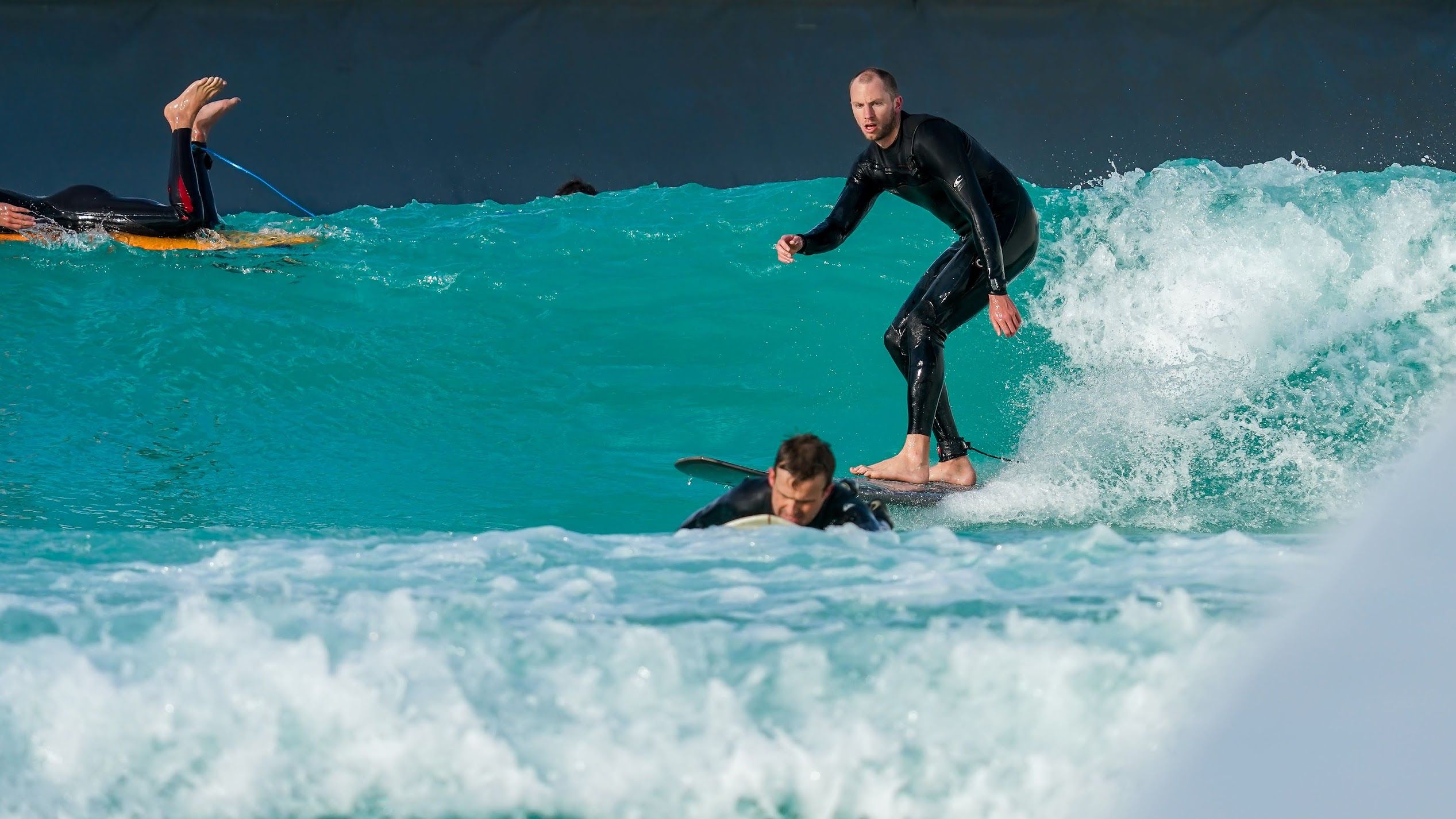
- You’ve snuck in another warm water stint, in El Salvador. The waves are point breaks because of ancient volcanos stretching out from the mainland, creating perfect peeling rights. You’ve played in wave pools and a handful of different, shorter surfboards. You still can’t turn. You fall off all the time. You still can’t read a surf forecast. The wetsuit, your treasured possession has several holes. Wax is caked into the knee pads. You’re shivering after 20 minutes when you really thought you were tougher than that. You’ve got to let it go. But maybe one more surf.
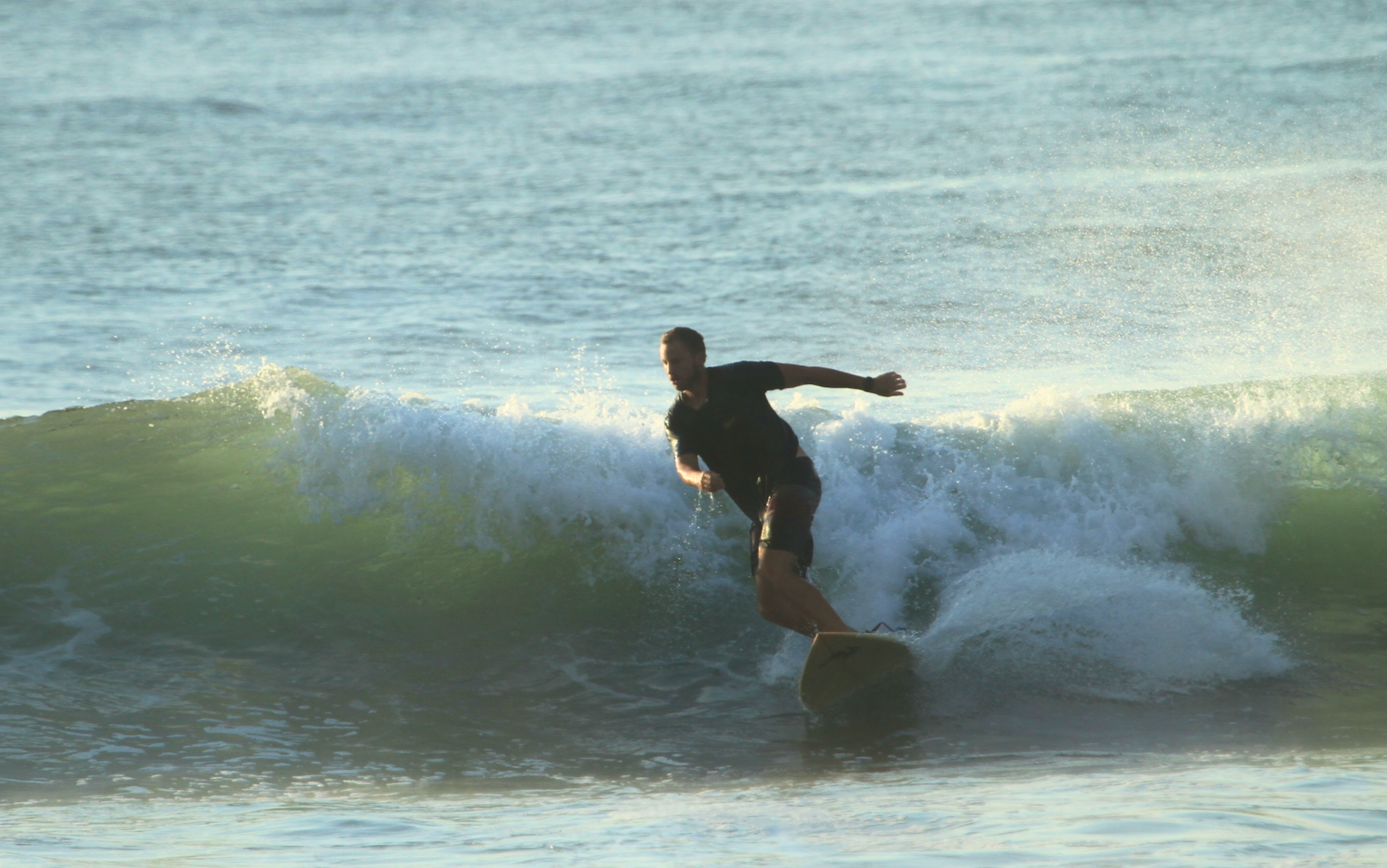
Ponds and Stacks
More and more people are interested in finding careers that don’t resemble traditional employment. Whether it’s walking away from Big Tech to found a Web3 startup or starting that D2C showerhead company you’ve always dreamed of, it’s all about becoming your own boss.
But what exactly will you do? And how will you stand out?
Find your own pond
Ben Thompson writes about the most popular tech companies that everybody knows about. That’s an extremely competitive pond. Everyone has an opinion on the big tech companies. When he started, Ben saw a gap. Lots of people talked about tech products, lots of people talked about Wall St results, but there was a gap in the middle. Why is this important? It’s exceptionally difficult to generate differentiation on your own. To compete in Ben’s pond would be really hard. Even if you were better at what he does, your voice would be drowned out. You’re better off finding some green space. Or finding your…
Unique strengths
Ben admits he is really fast at reading, writing and has a good memory. This is important because he is leaning hard on those strengths so he can write four articles a week. There’s probably lots of people who look at what Ben does and say, hey all I need to do is write four times a week, easy! The reality is, if you don’t have Ben’s unique strengths, you will struggle with this task. Not only is it pleasurable doing stuff that you are good at, you’re more likely to keep doing it.
Stacking strengths
Bringing these two concepts together is something called ‘talent stacking’ that I believe Scott Adams coined. Let’s say you’ve found a unique area where you are very strong at (eg. Car photography or real estate law). It’s still hard to be the best at it. If you can combine a few strengths, you will naturally create some advantage for yourself. Scott writes: “In my case, I can draw better than most people, but I’m hardly an artist. And I’m not any funnier than the average standup comedian who never makes it big, but I’m funnier than most people. The magic is that few people can draw well and write jokes. It’s the combination of the two that makes what I do so rare. And when you add in my business background, suddenly I had a topic that few cartoonists could hope to understand without living it.”
Positioning it all together
Jack Trout and Al Ries talk about something similar for brands with their positioning theory. When you are really good in a specific area, you ‘cut through the prospect’s wall of indifference’. This works for Sprite and also for personal careers. “Most people aren’t ruthless enough to set up a single concept for themselves. They vacillate. They expect others to do it for them.”I’m the best lawyer in Dallas.” Are you? How often would your name be mentioned if we took a survey of the Dallas legal community? “I’m the best lawyer in Dallas” is a position that can be achieved with some talent, some luck, and a lot of strategy. And the first step is to isolate the concept that you are going to use to establish that long-term position. It’s not easy. But the rewards can be great.”
I’m an Australian but I’ve spent a lot of time working in the States. I’m actually a green card holder. That makes my tax situation tricky. I found an accountant who specializes in Australians living in America. He is absolutely top of mind when it comes to that problem. He’s not the best accountant, he’s not the best accountant focused on individual tax returns, but he’s probably one of the best accountants focused on individual tax returns for Australians living and working in America!
Try this. Draw a line. On one end of the line, label it as ‘stuff you are very good at’ (you don’t need to be the best in the world). On the other end, label it ‘stuff I suck at’. Spend some time plotting strengths and see if you can group some together. Maybe you are naturally gifted at public speaking and decently good at javascript. That sort of thing. Once you’ve found some interesting groupings spend some time researching what’s out there. Is anyone playing in that pond?
